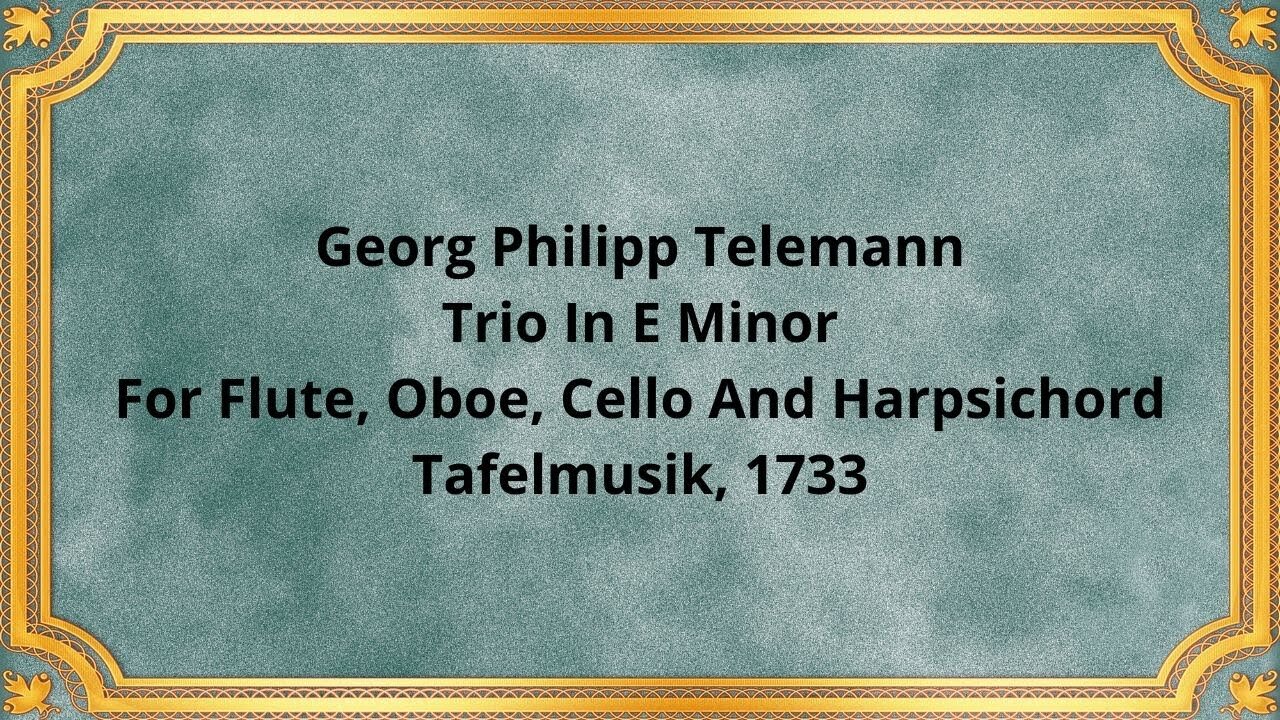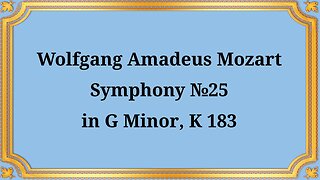Premium Only Content

Georg Philipp Telemann Trio In E Minor For Flute, Oboe, Cello And Harpsichord Tafelmusik, 1733
#classicalmusic #GeorgPhilippTelemann #TrioinEminor #flute #oboe #cello #harpsichord #Tafelmusik #baroquemusic #composer #chambermusic #musicappreciation #musictheory #classicalconcerts #musichistory #baroqueera #musicperformance #classicalinstruments #musicalensemble
Publication date 1951
MILTON WITTGENSTEIN, Flute
MARCEL HUBERT, Violoncello
ENGELBERT BRENNER, Oboe
SYLVIA MARLOWE, Harpsichord
In the realm of classical music, the name Georg Philipp Telemann shines brightly as one of the most celebrated composers of the Baroque era. One of his notable works is the Trio in E Minor for Flute, Oboe, Cello, and Harpsichord Tafelmusik, composed in 1733.
Composed during the height of the Baroque period, Telemann's Trio in E Minor is a testament to his exceptional talent and innovation. This piece is part of Telemann's renowned collection, Tafelmusik, which includes a series of instrumental works designed to accompany social gatherings, banquets, and other festive occasions. The trio showcases Telemann's ability to blend different instruments harmoniously, resulting in a captivating musical experience.
The Trio in E Minor for Flute, Oboe, Cello, and Harpsichord is a prime example of Telemann's mastery of chamber music. The composition is structured into several movements, each contributing to the overall thematic development and showcasing the unique qualities of the instruments involved.
The trio begins with a solemn Largo movement, where the flute and oboe intertwine their melodies, creating a poignant and introspective atmosphere. The cello provides a rich foundation with its deep and resonant tones, while the harpsichord adds delicate ornamentation, enhancing the overall texture of the piece.
Following the contemplative Largo, the trio transitions into the lively Allegro movement. Here, Telemann's skillful composition shines as the flute and oboe engage in a playful and spirited musical dialogue. The cello provides a rhythmic pulse, while the harpsichord adds a touch of brilliance through its intricate arpeggios and ornamentation.
The third movement, Andante, takes a more leisurely pace, allowing each instrument to showcase its individuality. The flute and oboe weave their melodic lines together, creating a sense of harmony and unity. The cello adds depth and richness to the ensemble, while the harpsichord provides subtle accompaniment and rhythmic support.
The trio concludes with the vibrant Vivace movement, characterized by its lively tempo and energetic interplay between the instruments. Telemann's intricate counterpoint and melodic development keep the listener engaged, while the harpsichord adds a touch of brilliance and adds to the overall excitement of the piece.
One of the remarkable aspects of Telemann's Trio in E Minor is the combination of instruments employed. The flute, oboe, cello, and harpsichord come together to create a harmonious blend of timbres and textures. The flute and oboe provide the melodic voices, each with its unique tonal character, while the cello adds warmth and depth. The harpsichord, with its delicate and sparkling sound, serves as both a melodic and accompanying instrument, enriching the overall sonic experience.
Conclusion:
Georg Philipp Telemann's Trio in E Minor for Flute, Oboe, Cello, and Harpsichord Tafelmusik, composed in 1733, stands as a testament to the composer's craftsmanship and innovation. Through its thoughtful structure, interplay between instruments, and the unique combination of flute, oboe, cello, and harpsichord, this trio offers a captivating musical journey. Telemann's ability to blend different instruments harmoniously creates a harmonious tapestry of sound, showcasing his mastery of chamber music. The Trio in E Minor remains a beloved piece in the classical music repertoire, enchanting audiences with its beauty and artistry.
You have the opportunity to support the channel:
https://destream.net/live/RadSiarAl/donate
https://www.buymeacoffee.com/6355radsiaral
-
 16:53
16:53
Classical music_Music Inspiration
21 days agoWolfgang Amadeus Mozart Symphony No. 25 in G minor, K. 183
391 -
 10:59
10:59
itsSeanDaniel
1 day agoEuropean Leaders INSTANTLY REGRET Disrespecting Trump
12.1K14 -
 16:43
16:43
GritsGG
16 hours agoThey Buffed This AR & It Slaps! Warzone Loadout!
12.3K1 -
 2:05:30
2:05:30
Side Scrollers Podcast
20 hours agoEveryone Hates MrBeast + FBI Spends $140k on Pokemon + All Todays News | Side Scrollers Live
106K11 -
 11:06
11:06
The Pascal Show
14 hours ago $1.32 earned'THEY'RE GETTING DEATH THREATS!' Jake Haro's Lawyer Breaks Silence On Emmanuel Haro's Disappearance!
14K2 -
 LIVE
LIVE
Lofi Girl
2 years agoSynthwave Radio 🌌 - beats to chill/game to
311 watching -
 2:19:32
2:19:32
Badlands Media
1 day agoDEFCON ZERO Ep. 005: False Flags, Cyber Fronts & Global Power Plays
153K66 -
 2:35:23
2:35:23
FreshandFit
9 hours agoWhy Black Men Don't Date Black Women Debate
43.5K41 -
 2:03:42
2:03:42
Inverted World Live
13 hours agoBigfoot Corpse Coming to the NY State Fair | Ep. 94
113K27 -
 6:16:23
6:16:23
SpartakusLIVE
14 hours ago$1,000 Pistol Challenge || #1 ENTERTAINER of The EONS Eradicates BOREDOM
87.4K2